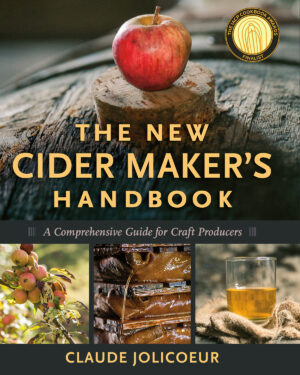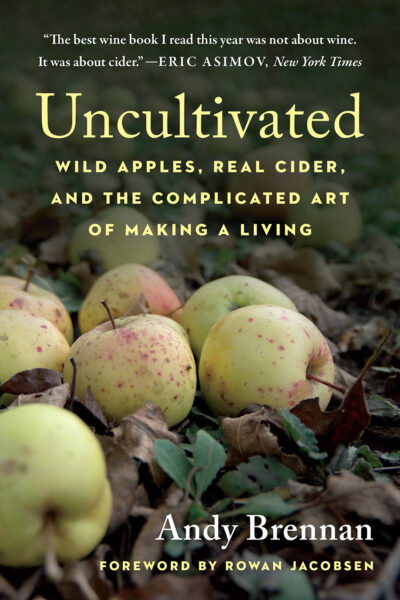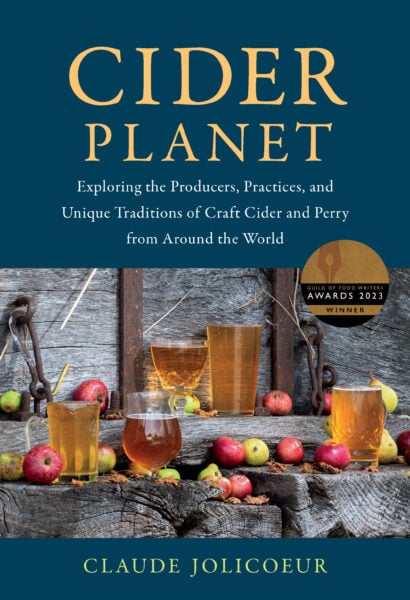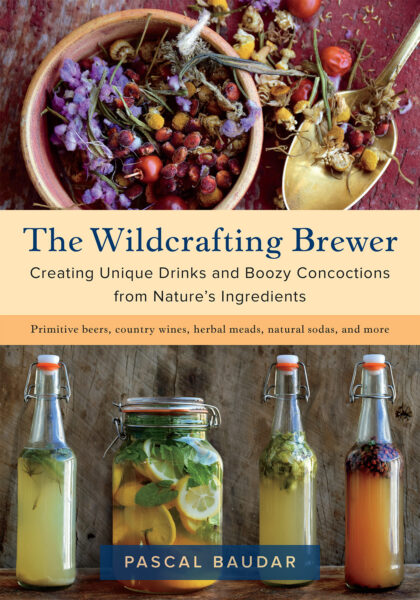7 Mantras of Cider Making
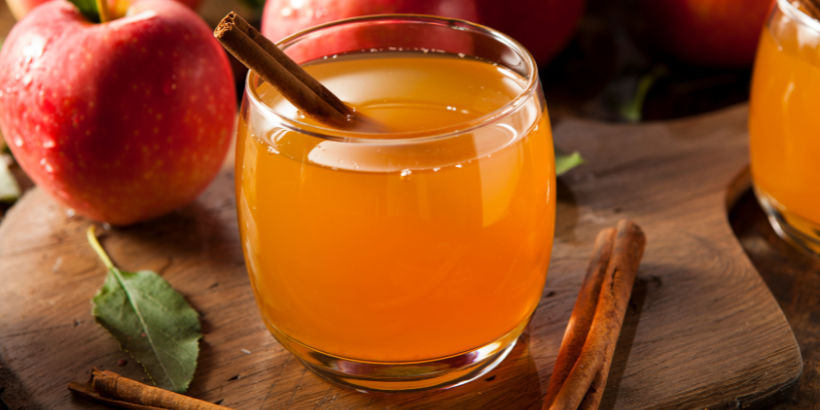
To make the very best cider—whether for yourself, your family, and friends or for market—you first need a deep understanding of the processes involved, and the art and science behind them.
Fortunately, The New Cider Maker’s Handbook is here to help. Within the handbook, award-winning cider maker Claude Jolicoeur provides today’s makers with all the tools they need to produce high-quality ciders — starting with the basics.
In the excerpt below, Claude discusses his seven mantras: short guidelines and principles that helped him as he learned to make cider himself.
The following is an excerpt from The New Cider Maker’s Handbook by Claude Jolicoeur. It has been adapted for the web.
Cider Making Mantras
1. Seek Quality Cider.
In my opinion, there is no real point in making our own cider (or any other drink, for that matter) if we don’t create a product of great quality. To make cider, we need to invest time and energy. And the cider needs to be really good to justify this activity. If you prefer a ten-dollar bottle of cider, wine, or beer bought at the store to the cider that you produce, you probably won’t be making cider for a long time. On the other hand, if you put a bottle of your own cider on a table beside a bottle of real French Champagne and discover that your cider is being drunk faster than the Champagne because people think it tastes better, then that is a really rewarding experience.
2. Good Cider Needs Great Apples.
To produce this excellent cider, well, you need great apples. The quality of the cider will never exceed that of the apples used to make it. So let’s never forget this statement of utmost importance: It is at the orchard that the quality of the cider makes itself. This, because it is at the orchard that the apples fill up with sugar and flavor, with the help of sunshine, soil, and everything else that surrounds the tree—in other words, the terroir.
3. The Cider Makes Itself.
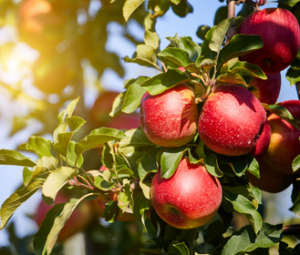 As cider makers, we need to be modest. We don’t really “make” the cider. The cider makes itself, and as such the term cider maker is not really appropriate. We will see later that the apple juice naturally contains all the required ingre- dients to transform itself into cider. And to be precise, cider making is in fact a complex biochemical transformation that is performed by microorganisms called yeast. The cider maker is merely a guide. What we do is to provide favorable conditions that will permit the cider to evolve in the best possible environment to yield a high-quality product. And we should not forget that we can’t control everything: cider is alive, and sometimes it doesn’t go the way that we anticipated. Sometimes this variability will be for the better, sometimes for the worse. When this happens, though, it is important to try to understand and learn why.
As cider makers, we need to be modest. We don’t really “make” the cider. The cider makes itself, and as such the term cider maker is not really appropriate. We will see later that the apple juice naturally contains all the required ingre- dients to transform itself into cider. And to be precise, cider making is in fact a complex biochemical transformation that is performed by microorganisms called yeast. The cider maker is merely a guide. What we do is to provide favorable conditions that will permit the cider to evolve in the best possible environment to yield a high-quality product. And we should not forget that we can’t control everything: cider is alive, and sometimes it doesn’t go the way that we anticipated. Sometimes this variability will be for the better, sometimes for the worse. When this happens, though, it is important to try to understand and learn why.
4. Good Cider Needs Time; Cider Makers Need Patience.
On the Internet discussion forums, beginners often ask why their cider is not ready a few weeks after starting the fermentation process. Beginners are generally impatient. We need to repeat that Patience is the mother of all virtues for a cider maker—at least for those who seek quality. Good cider needs time to make itself. It should not be rushed. So if you prepare your cider in October and follow the guidelines set forth in this book, please don’t expect to be drinking it by New Year’s Day (though you may safely plan to enjoy it by the following year’s holiday season).
5. The KISS Principle.
KISS stands for “Keep it simple, stupid.” In addition to being a cider maker, I am also a mechanical engineer, and KISS is an important concept in machine design: one should always seek the simplest solution that will do the required job. (Note that not all machines are designed with this concept in mind, but that’s another story.) I have found with time that KISS also applies to cider making. It often happens that inexperienced cider makers want to do too much on their first trials: chaptalize the juice (adding sugar, molasses, or honey); use other fruits to modify the flavor; make acidity corrections; add some tannins; or even make a naturally sweet (keeved) cider or provoke a malolactic fermentation. And then they come to the discussion forums on the Internet and ask what they should do next because things don’t seem to go that well. In my opinion, it is far better just to keep things simple, to ferment good-quality, pure juice without additives and use well-proven techniques—at least in the beginning. Once you have mastered the basic cider-making practices, then it is time to try new things and experiment.
6. Clean Before Storing; Sanitize Before Using.
No piece of equipment, bottle, or anything else should be put into storage until the next usage without having first been well washed. This is particularly important for bottles and carboys, as they are very easy to clean when just emptied but not so easy to clean once a deposit has dried in them. All pieces of equipment need to be sanitized or disinfected just before use. One should not assume that because something has been stored well cleaned, it may be used as is whenever it’s required. Although not very glamorous, hygiene and cleanliness are of the utmost importance in all cider-making opera- tions. The cider room or cider house, as well as all the material, should always be perfectly clean. A great deal of the time we spend in cider making is in fact spent cleaning, the price we pay to avoid cider troubles.
7. Remember What You Did.
Good note-taking and rigor are the keys to both good quality and improvement over time. By documenting what you do, you can closely monitor how things are going with your cider and make interventions, if necessary, at the best moment. Good notes also permit you to compare results from year to year, from one blend to another. That way, when you make a cider that is particularly successful, you can re- peat the same process, just as a scientist strives to achieve “reproducible results.” Conversely, when things don’t go that well, good notes are useful to avoid repeating the same mistakes.
Recommended Reads
Wild Apples, Real Cider, and the Complicated Art of Making a Living
Recent Articles
Chances are, you’ve seen cattails growing on the edge of your local lake or stream at least once or twice. Instead of just passing these plants, try foraging for and cooking them to create delicious seasonal dishes! The following excerpt is from The New Wildcrafted Cuisine by Pascal Baudar. It has been adapted for the…
Read MoreGarlic mustard: while known as “invasive,” this plant can be consumed in its entirety and has great nutritional value. Plus, the garlic-flavor is a perfect addition to any recipe that calls for mustard! The following are excerpts from Beyond the War on Invasive Species by Tao Orion and The Wild Wisdom of Weeds by Katrina…
Read MoreOh, honeysuckle…how we love thee. If only there was a way to capture the sweet essence of this plant so we could enjoy it more than just in passing. Luckily, foraging and some preparation can help make that happen! Here’s a springtime recipe that tastes exactly like honeysuckle smells. The following excerpt is from Forage,…
Read MoreIntroducing…your new favorite brunch dish! This whole broccoli frittata is packed with fresh, wildcrafted flavors that are bound to help you start your day off on the right foot. The following is an excerpt from The Forager Chef’s Book of Flora by Alan Bergo. It has been adapted for the web. RECIPE: Whole Broccoli Frittata…
Read MoreWondering where to forage for greens this spring? Look no further than hedges, which serve as natural havens for wild greens and herbs! The following is an excerpt from Hedgelands by Christopher Hart. It has been adapted for the web. Food from Hedges: Salads and Greens Let’s start by looking at all the wild foods…
Read More

